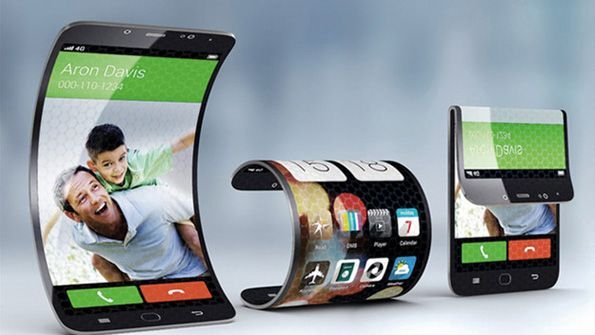
Technology makes us unbelieve, and the smartphone revolution has taken technological innovation to heights. Things like gesture interface, which we had all glimpsed in the Tom Cruise film Minority Report seemed far-fetched and fictional at that time (2003). It is a reality in mobile technology today, and by 2020, will be available to the masse. Mobile technology is not just changing the way we experience and live, but also defining it. Let us look at six mobile technologies that will become widely present in 2017.
--1-- (Electrovibration Technology) - The Touch and Feel of It
Electrovibration technology will change the mobile touchscreen dramatically. You will be able to feel different kinds of textures. I know what you are thinking. The online shopping experience will go higher. Imagine shopping for clothes online without worrying about the quality and texture of the clothes.
Disney researchers have been working intensively on developing touchscreens that let you feel textures. While electrovibration technology should have become a reality... by now, there have been some delay in the process. However, tech experts say that 2017 will herald the arrival of electrovibration technology on a large scale across touchscreen devices. It works on the phenomenon that, through electrostatic charges, your brain is tricked into feeling texture simply by touching the devices screen. Apple has also been working in electrovibration technology and has filed several patents to the technology.
This progress can also lead to socially beneficial trends. For instance, blind people can use it for access smartphones and Braille like everybody else.
--2-- (Speech-to-Speech Translation) - Communicating with the World Through a Fingertip
In 2013, Microsoft impressive speech-to-speech translation and now, real-time multi language conference calls may finally become a commercial reality in 2017. IBM has also mentioned that it will open its Watson supercomputing platform to third party developers. This will allow language processing features to be built into apps. Imagine discussing important matters across the globe with just a tap and tap, in multiple languages without the aid of a mediator or a translator.
--3-- (The Brain Computer Interface) - When Your Thoughts Become Commands
Every thought that occurs in our brain has its own brainwave patterns. Hence, two electrical signals are the same. These unique electrical signals can be mapped out to carry out specific commands of it. So basically your smartphone with its brain computer interface can detect the brainwave emitted with your thoughts and execute the set commands.
This is a futuristic wonderful technology that could see some commercial application in smartphones in 2017. Think if your phone could simply detect that you need the curtains drawns, and you are too sleepy for get out of bed. And before you know it, it's done. The potential for such an amazing user interface that allows you to control your smartphone with your mind, that's amazing.
--4-- (Wireless) - Speedy Charging Becomes a Reality
Running out of battery power is one of the most frequent and persistent complaints of most smartphone users. We use our smartphones for single or multiple purposes simultaneously. The result is a drained or low battery. Most users reveal that they need to charge their devices every day. However, there has been a buzz in the tech world for some time now that smartphone users will be able to charge their cellphones through day to day motions like tapping or walking the screen.
Another amazing revolution we are keenly awaiting is the availability of the ultra rapid charger that comes with an advanced battery technology that will allow you to charge your phone completely in just 40 seconds. Beside of these, another futuristic trend that will hopefully go mainstream in 2017 is where one gadget can be used to charge another without connect with wire.
--5-- Flexible and Wearable Smartphones
Today represents a new era of technology in which wearability and flexibility are becoming keywords in the dynamics of mobile phones. Screens will soon be able to be folded and unfolded, owing to Organic Light Emitting Diode technology. So you can watch your favorite movie and game on a large screen with high quality and the fold it to pocket size and put it away without any problem. This technology will also enable the prevalence of paper thin screens that can project from both sides of the screen. What this translates for users is the ability to show videos and pictures to your friend on one side, while using the other side as a control to maneuver images and videos as you like.
With the introduction of flexibility in smartphones, companies are also working toward manufacturing wearable smartphones. Use it as a handset as and when you like and then it turns into a wristwatch which you can sport. While this will not be a pioneering concept in mobile technology, it is something that should be made available to the masses by the end of 2017.
--6-- Augmented Reality
The future of mobile technology closely revolves around two words: “augmented reality”. Augmented reality in simple terms means an advanced and unseen version of what we can see with our naked eyes. A regular sight when perceived through our smartphone infused with the augmented reality technology will be enhanced through the use of computer generated sensory input such as video, graphics, sound, and GPS data.

Similarly, you can see a particular place through your AR incorporated smartphone camera, and immediately find out the nearest bookshops, cafes and dining places.
Thanks for share nice information
Downvoting a post can decrease pending rewards and make it less visible. Common reasons:
Submit
Hi! I am a robot. I just upvoted you! I found similar content that readers might be interested in:
http://www.machinedesign.com/guest-commentary/6-future-mobile-technologies-could-arrive-2017
Downvoting a post can decrease pending rewards and make it less visible. Common reasons:
Submit